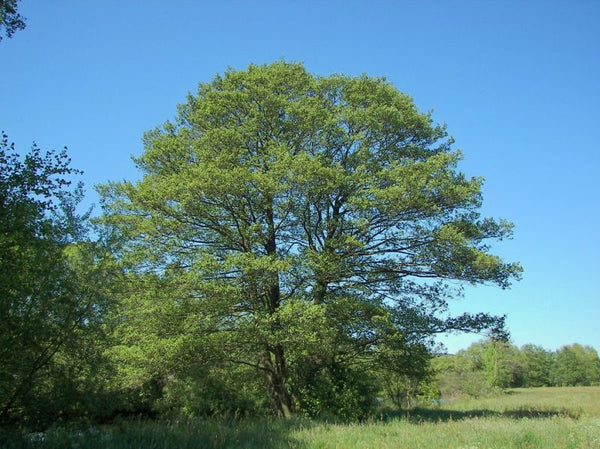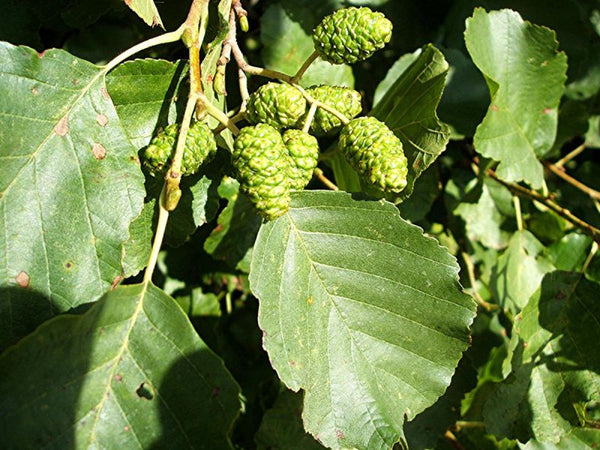black alder, European alder (alnus glutinosa)
Shipping calculated at checkout
170 in stock
Need more? Contact us
Tree tolerant of shade and poorly drained or even marshy soils for cultivation in zone 4a.
The glutinous alder, very present in the native flora of Europe (including Scandinavia), is a deciduous tree with a slender trunk supporting almost horizontal branches. Its branches first bear purple buds, then alternate leaves, rounded and truncated at the top. They are dark green above, lighter green below and their edge is toothed. The young leaves are slimy and give the tree its name (glutinosus = slimy). The bark of alder is green or gray-brown when the tree is young, brown-black and cracked if it is old. When cut, its yellowish-white wood turns orange or red in the light. The tree bears both male flowers (long catkins
pendants) and females (short erect, purple catkins) which transform into small woody cones, the
strobiles. The strobilus looks like a small pine cone and contains the seeds between its scales.
Alder can live up to 100 years and reach 20 meters high in the best conditions. It flowers in March-April; flowering precedes the emergence of its leaves. Pollination occurs via the wind. Ripe seeds are carried by the wind or, more often, by the river, before germinating on the bank. The seed can retain its germination power for a year. Alder is a pioneer species (which first colonizes bare land). Alder combines with a fungus which, installed on its roots, supplies it with water and minerals. The fungus also provides vitamins and secretes a particular substance which protects the roots against diseases. In exchange, the tree provides it with the simple sugars necessary for its fruiting. Alder also harbors in its roots another organism, half bacteria, half fungus, an actinomycete. This causes more or less large growths called nodules. Thanks to these nodules, alder can fix nitrogen in the air and feed itself even in the poorest places.



